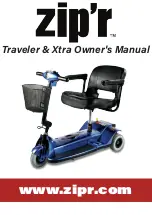
LX_FR565G-INS-LAB-RevD21 11
CDC RECOMMENDATIONS
CLEANING AND DISINFECTING STRATEGIES FOR ENVIRONMENTAL SURFACES IN PATIENT-
CARE AREAS FOR VINYL UPHOLSTERY, WALL COVERINGS AND FLOORING
• Select EPA-registered disinfectants, if available, and use them in accordance with the
manufacturer’s instructions.
• Do not use high-level disinfectants / liquid chemical sterilants for disinfection of either
noncritical instruments and devices or any environmental surfaces; such use is counter to label
instructions for these toxic chemicals.
• Follow manufacturers’ instructions for cleaning and maintaining noncritical medical
equipment.
• In the absence of a manufacturer’s cleaning instructions, follow certain procedures:
• Clean noncritical medical equipment surfaces with a detergent / disinfectant.
• Do not use alcohol to disinfect large environmental surfaces.
• Use barrier protective coverings as appropriate for noncritical surfaces that are:
• Touched frequently with gloved hands during the delivery of patient care.
• Likely to become contaminated with blood or body substances.
• Difficult to clean (e.g., computer keyboards).
• Keep housekeeping surfaces (e.g., floors, walls, tabletops) visibly clean on a regular basis and
clean up spills promptly.
• Use a one-step process and an EPA-registered hospital detergent / disinfectant designed for
general housekeeping purposes in patient-care areas where:
• Uncertainty exists as to the nature of the soil on the surfaces (whether it is blood or body
fluid or just normal dust or dirt).
• Uncertainty exists regarding the presence of multi drug resistant organisms on such
surfaces.
• Detergent and water are adequate for cleaning surfaces in nonpatient-care areas (e.g.,
administrative offices). Clean and disinfect high-touch surfaces on a more frequent schedule
than minimal-touch housekeeping surfaces. Clean walls, blinds, and window curtains in patient-
care areas when they are visibly dusty or soiled.
• Do not perform disinfectant fogging in patient-care areas.
• Avoid large-surface cleaning methods that produce mists or aerosols, or disperse dust in
patient-care areas.
• Follow proper procedures for effective uses of mops, cloths, and solutions.
• Prepare cleaning solutions daily or as needed, and replace with fresh solution frequently
according to facility policies and procedures.
• Change the mop head at the beginning of each day and also as required by facility policy, or
after cleaning up large spills of blood or other body substances.
• Clean mops and cloths after use and allow to dry before reuse; or use single-use, disposable
mop heads and cloths.
• When performing low- or intermediate-level disinfection of environmental surfaces in nurseries
and neonatal units, avoid unnecessary exposure of neonates to disinfectant residues on these
surfaces by using EPA-registered germicides in accordance with manufacturers’ instructions
and safety advisories.


































